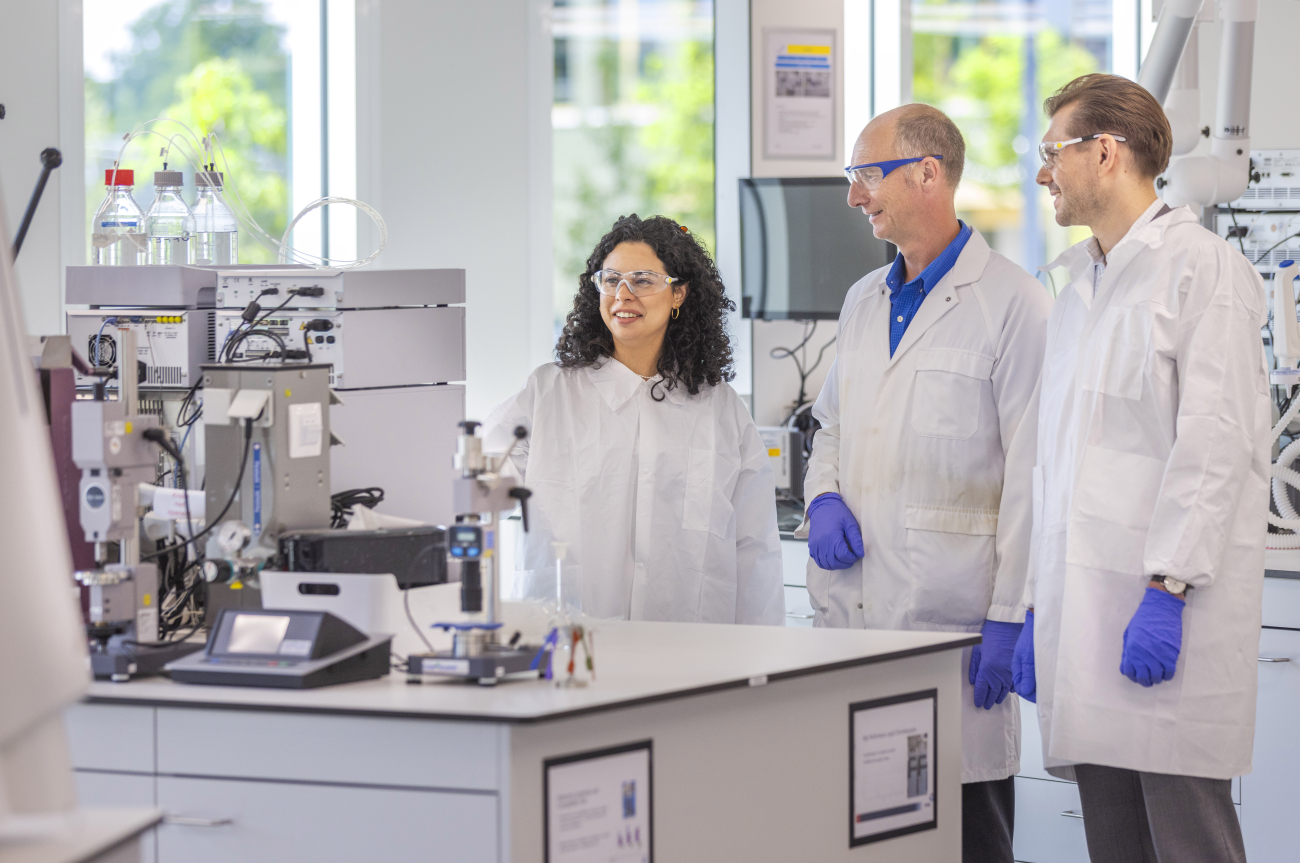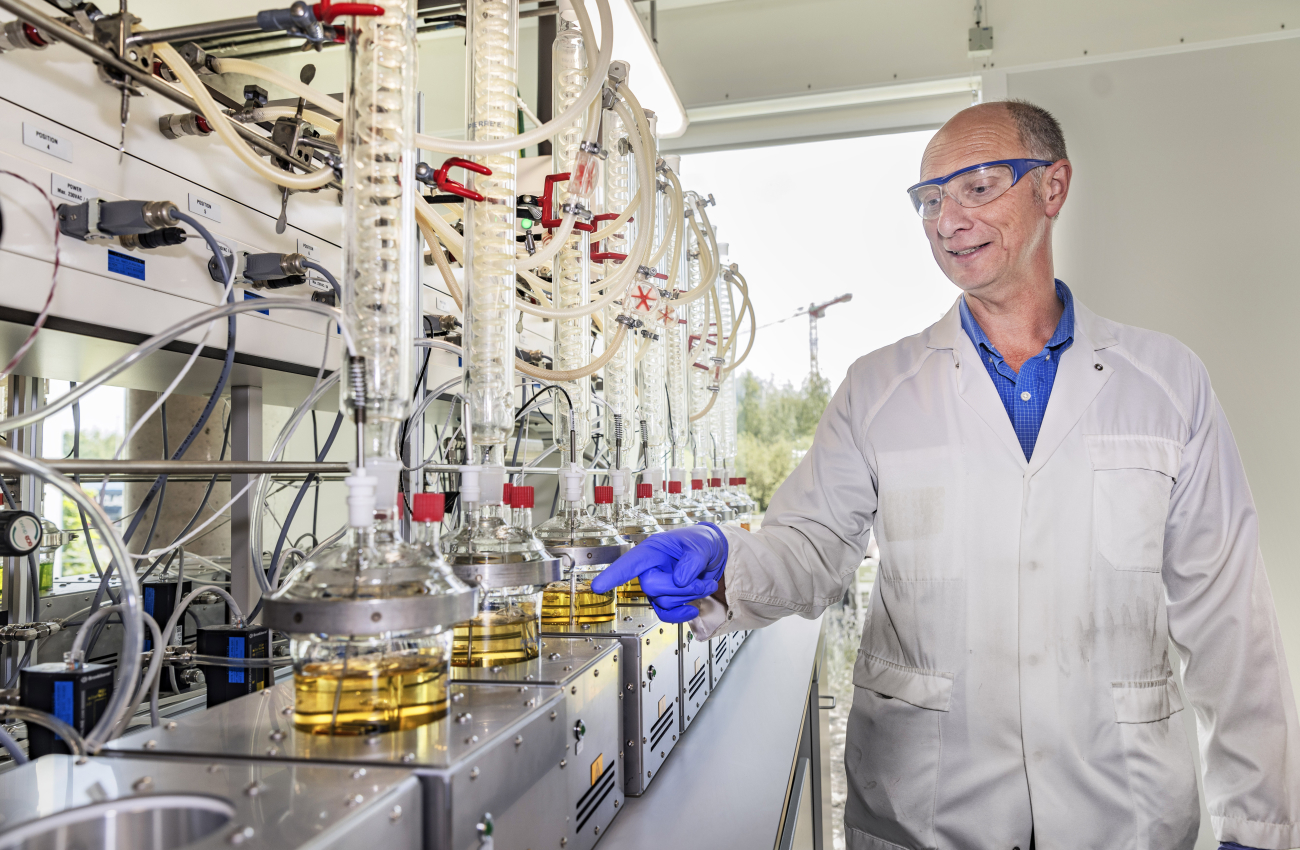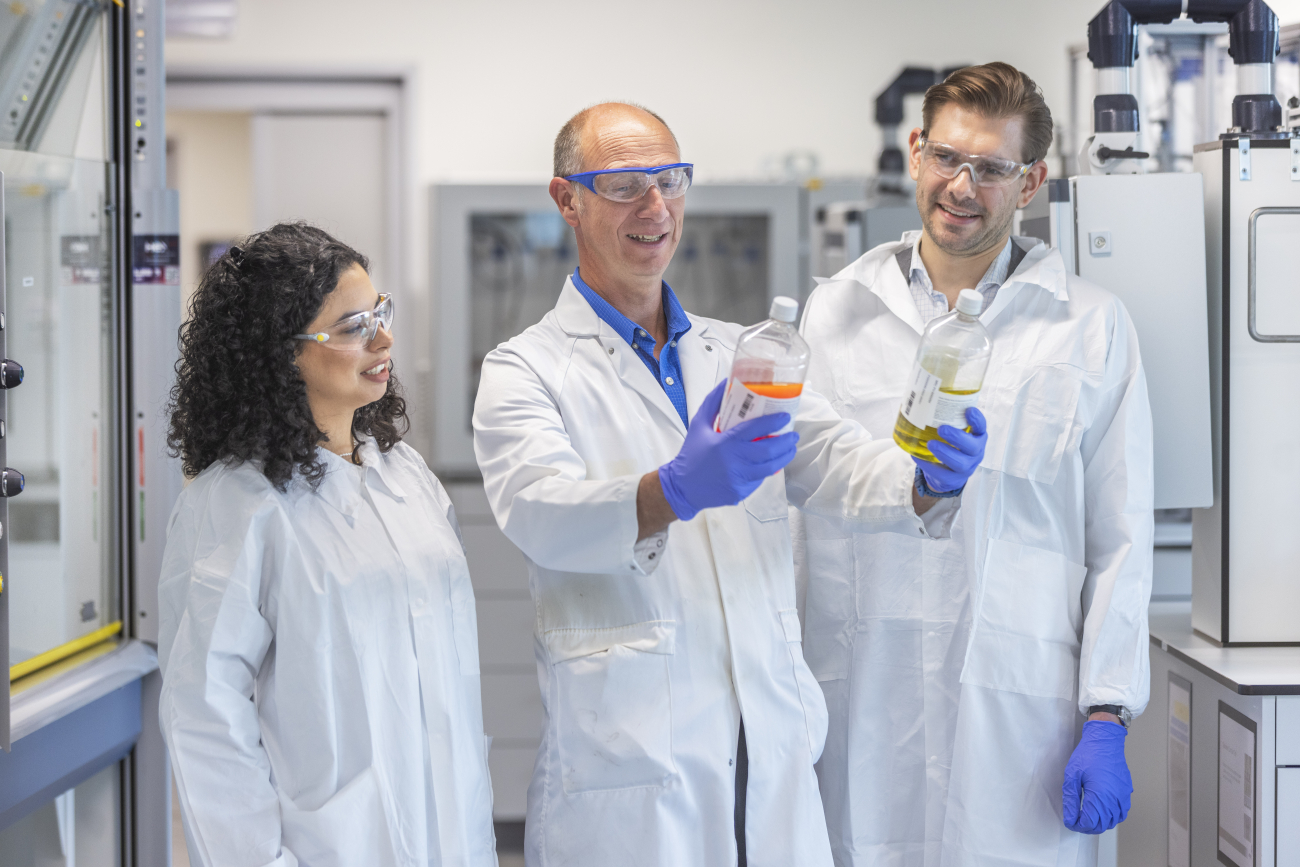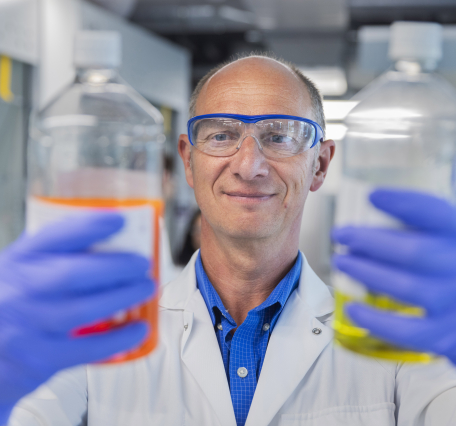

The search for the ideal refrigerant: it's all about the additives
Serge Lievens has been active in the development of coolants for around thirty years and, by his own account, is still learning every day. And rightly so, as the search for the ideal refrigerant never really ends. The cooling systems of cars, whether electric or not, trucks, marine engines, gas turbines, nuclear power plants, wind turbines, and data centres all place different, often conflicting and constantly evolving demands on coolants. It is up to Serge Lievens and his R&D team at Arteco to keep pace with developments across these varied applications and adapt their products accordingly.
Coolants have been used for decades, so what is there still to improve?
"The original coolant was simply water, and it performs remarkably well. However, in regions like ours, water freezes during winter, which is why an alcohol such as monoethylene glycol is added to produce a coolant suitable for year-round use. In many areas, water also contains calcium, which can lead to deposits that are undesirable in a cooling system. To prevent this, specific additives are included. Coolants also serve to protect against corrosion. However, the protective layer they form can become insulating, reducing the efficiency of heat transfer. To manage this, additional additives are used to limit build-up and maintain thermal performance. And that’s just the beginning. At its core, a coolant’s primary role is to transfer heat, which is largely determined by the choice of base fluid -something that is not the most complex scientific challenge. Our real added value lies in developing the right combination of additives to ensure long-term stability and protection of the cooling system, even under demanding conditions."
Do you mean that each cooling system requires its own optimal coolant?
"Absolutely. One of the key factors is the temperature of the system being cooled. In combustion engines, this temperature has steadily increased over the past few decades, resulting in significant gains in efficiency. Whereas older engines typically operated at around 88°C, modern engines run at 110°C or even higher. At lower temperatures, glycol oxidation is minimal. But at today’s higher operating temperatures, it becomes a critical factor. This means we need to formulate additives that can effectively counter the oxidation of ethylene glycol and keep the coolant stable. Higher temperatures also make metals much more susceptible to corrosion. By incorporating advanced corrosion inhibitors, we enable car manufacturers to safely raise engine operating temperatures - ultimately supporting the development of more efficient engines. That added value has played a major role in Arteco’s transformation from a former underdog to a benchmark player in the European coolant market. Today, our market share consistently places us in first or second position. That lead can occasionally shift depending on a few key clients, as our main competitor holds a similarly sized share. According to Serge Lievens, one of the biggest contributors to our rise was a true technological game changer when introducing the Arteco technology to market: Organic Additive Technology (OAT), which replaced traditional mineral-based additives like silicates with organic alternatives."
Why was OAT a game changer?
"With organic additives, a very thin protective layer forms, and only at the points where corrosion begins. This results in more efficient heat transfer and significantly lower additive consumption. Whereas traditional coolants needed to be replaced every two years, OAT technology allowed us to guarantee a lifespan of up to five years. Some of our clients have even gone so far as to promote 'lifetime' usage for certain applications. My contribution wasn’t in the invention itself, but in the implementation, optimisation, and validation of the technology, working closely with both local and global industry leaders such as GM, Renault, Caterpillar, Opel, BMW, DAF, Volvo, Volkswagen..."

You might almost wonder: how difficult could it be to implement a game changer with all the advantages you've just described?
"Despite all the advantages, it still took a great deal of time and effort. The automotive industry is generally conservative, and many clients were hesitant to adopt our new technology. In this sector, safety is paramount, which means everything has to be validated twice over. When customers have had decades of positive experience with a reliable coolant technology, it’s very difficult to convince them to try something new, especially when industry specifications are written around legacy products. So where did we get our first opportunities? Primarily in cases where there were existing problems. We started working with various clients who were experiencing issues with corrosion, system failures, or blockages in their cooling systems. The good results we achieved, and the fact that we were able to solve additional issues along the way, became a strong argument in our favour. That’s how we began building positive references, and from there, we gradually expanded. Even after development, it took at least five years before we had a broadly accepted product in the market. And even then, it was nearly another ten years of hard work to convince more customers to switch to our technology."
What does the rise of electric vehicles (EVs) mean for you?
"Again, it all comes down to the selection of additives. Electric vehicles present a fundamentally different challenge for us. Whereas combustion engines require a strong focus on corrosion protection, in EVs the priority lies in maintaining a constant battery temperature. If a battery becomes too hot or too cold, both its lifespan and efficiency can decline rapidly. That’s why effective heat transfer, the prevention of layer formation, and avoiding local overheating are all critical requirements for EV coolants. On top of that, water-based coolants - commonly used in combustion engines - are naturally not ideal when combined with electricity. As a result, there’s a growing trend towards coolants with significantly lower electrical conductivity, as an added safety measure to help prevent accidental short circuits and potential propagation within the battery. For example, a new regulation in China will come into force later this year, mandating the exclusive use of low electrical conductivity coolants in EVs. These products have electrical conductivity values around fifty times lower than those used in traditional combustion engines. Our latest generation of coolants is already in the pipeline, but as you can imagine, this required a completely different additive strategy."
You’ve also brought coolants for data centres and direct-to-chip cooling to market. Is that a completely different ball game again?
"That is indeed a very different application, with its own specific requirements. Up until a few years ago, data centres were cooled using air. But with the rise of AI, the required computing power is increasing exponentially. For example, answering a query with ChatGPT uses ten to a hundred times more energy than a Google Search. That also means ten to a hundred times more heat is generated, and to dissipate that heat efficiently, data centres are now shifting towards more effective cooling methods like liquid cooling. For us, that presents a new puzzle - and a new opportunity. One example: coolants for data centres don’t need to be frost-resistant, so they typically contain little or no antifreeze. Unfortunately, that creates ideal conditions for bacterial growth, so we need to find the best way to combat that.
Another example: ethylene glycol, which has been used in coolants for over a century, is toxic. In a closed automotive cooling system, that’s acceptable. But it’s expected that home computers, like today’s high-end gaming PCs, will also eventually use liquid cooling. That’s why the standard for chip cooling seems to be shifting towards less harmful propylene glycol - which, for us, introduces a whole new design challenge. These developments are of great interest to us. We expect this to become an important industry. I would say that Arteco is currently one of the frontrunners in this space. But we also believe we can further strengthen our position, thanks to the excellent expertise we have in-house and our ability to offer an optimised product range."

Isn’t developing coolants sometimes more of an art than a science?
"No, it really is a science. It’s about observing carefully, continuously learning, and understanding where cross-applications are possible. That in itself is something of an art, of course, but it’s definitely not just a matter of mixing a few substances together and seeing what happens. That might be a common misconception, but you really need to know what you’re doing—what you’re combining, how you're combining it, and in what quantities. Many of our additives are aggressive if you use too much—but also if you use too little. In the right dosage, or when combined with the correct amounts of other additives, they provide the protection you’re aiming for. And that ideal mix can vary depending on the application or the specific cooling system. A lot depends on the materials manufacturers use for the engine block, gaskets, pipes, and so on, but also on the application itself—such as the temperature or load. These factors all influence the correct choice of coolant."
Finding the right mix of additives for each cooling system sounds like a time-consuming process. Or do you now have enough data to reliably model what a new combination of additives will deliver?
"It’s definitely a time-consuming process. Some of the tests we run only once or twice a year because they take more than 2,000 hours to complete. That frequency doesn’t provide enough empirical data to reliably feed into a computer model. Maybe that will be possible in the future, but for now, we still rely heavily on our field knowledge, experience, and intuition to reach results within a reasonable timeframe.
And even then, we sometimes discover synergies or antagonistic effects that we couldn’t have predicted. You know, when people think of coolants, they often imagine a simple antifreeze. But a coolant is actually very complex, and frost protection is just one of the basic properties we consider. The fluid comes into contact with a whole range of components in a vehicle—not just the engine, but also the thermostat, water pump, hoses, seals, radiator, cabin heating, and more recently, the battery in BEVs (Battery Electric Vehicles).
All of these elements within the cooling system need to be taken into account. Cooling just the engine—that’s not difficult. But the combination of components often imposes conflicting demands. In that sense, every coolant we develop is a carefully considered and optimised compromise. Our job is to find the best possible balance for each specific application."

Aren’t your products relatively easy to reverse-engineer? Can’t competitors just analyse them and see exactly which additives you’ve used?
"If you know exactly what’s in it, reverse-engineering might become easier. But without that knowledge, it becomes a real challenge. Large competitors could broadly analyse our coolant if they truly set their minds to it but still might not be able to put the finger on the pepper and salt details. For smaller players, though, it would be much more difficult. As the saying goes: becoming number one is tough, but staying number one is even tougher. We’re no longer the underdog - we’re the benchmark now, and everyone’s trying to catch up."
How do you protect yourselves against competitors who come too close to your technology?
"At Arteco, we aim to strike a good balance between patents and trade secrets. If something can be analysed relatively easily, we try to protect it through patents. If it’s difficult—or nearly impossible—to analyse, we tend to keep it as a trade secret. It’s not an easy consideration, especially as analytical technologies continue to evolve. What’s hard to analyse today might be much easier tomorrow. Over the course of my career, I’ve come to appreciate the importance of intellectual property more and more. When I started at Texaco, we worked with in-house IP specialists. These days, at Arteco, we collaborate with an external patent firm like NLO. I had no background in IP when I first began, yet we were expected to draft our own patent applications. They weren’t always the strongest, but the experience was a valuable learning curve. Over the years, my knowledge and insight into IP have grown significantly, and so has my interest in the subject—today, I even call it a hobby. Together with Sarah and the rest of the NLO team, we now have an open dialogue where we challenge one another and turn ideas into valuable patents. They remain the IP experts, and we remain the technology experts. But together, we’ve developed a shared language that allows us to communicate the complexity and nuances of our respective fields. It’s a great additional skill—one that not only supports the creation of innovative products, but also helps us generate added value for the business through science."


